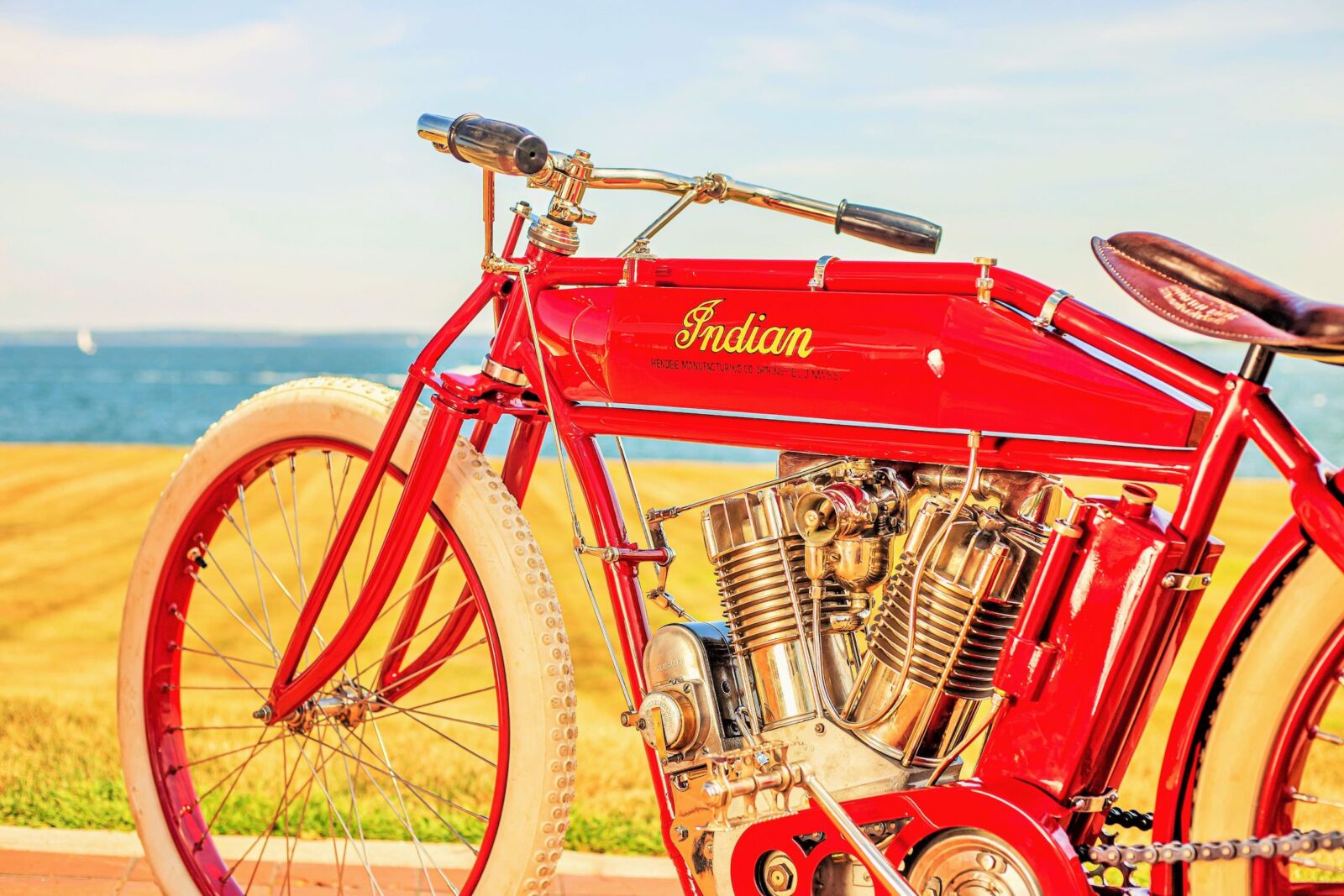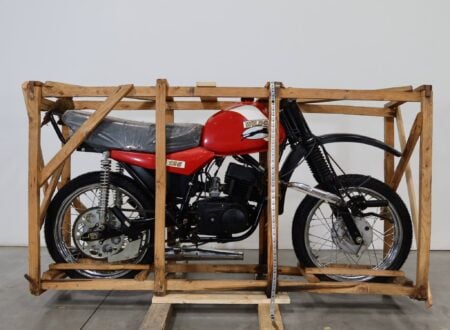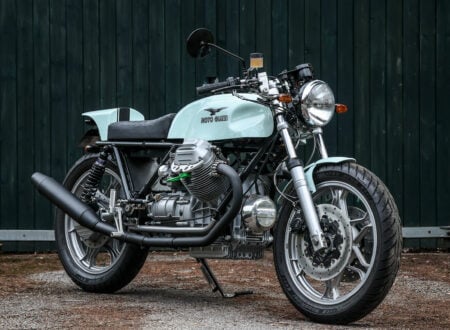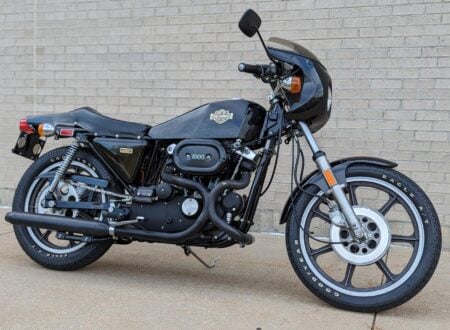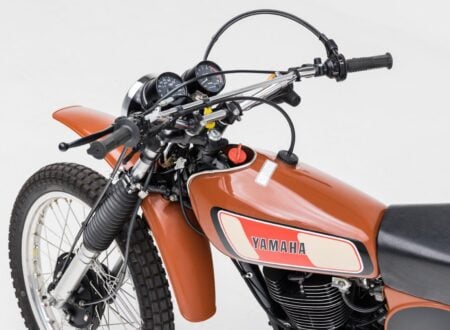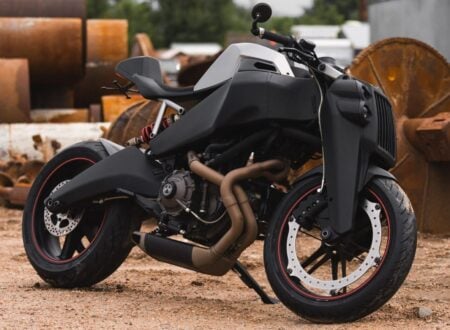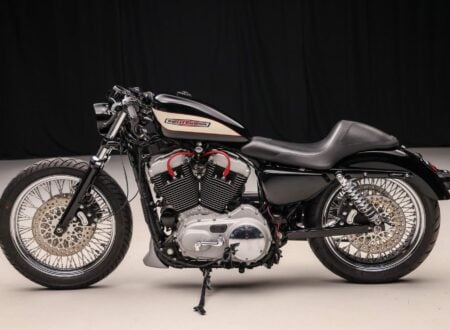This 1913 Indian Board Track Racer was one of America’s first true superbikes, board trackers like this were capable of speeds in excess of 100 mph (160+ km/h) on the rudimentary race tracks that were springing up across the United States, a speed made all the more impressive by the fact the bikes had no brakes.
Indian And The Board Trackers
Indian was one of the world’s pre-eminent motorcycle manufacturers in the 1910s, in 1911 Indian motorcycles took a 1-2-3 place finish at the Isle of Man TT against the best in the world, and they enjoyed no small amount of success on race tracks on the outskirts of big cities around North America.
The key to the runaway success of Indian was down to the wits of the company’s founders George Hendee and Oscar Hedstrom. Both men had been champion bicycle racers in the late 1800s, Hendee founded the Hendee Manufacturing Company to build bicycles in 1897 and in 1900 Oscar Hedstrom joined him.
The two men set to work developing what was essentially a motorized bicycle with a single cylinder, 1.75 bhp engine.
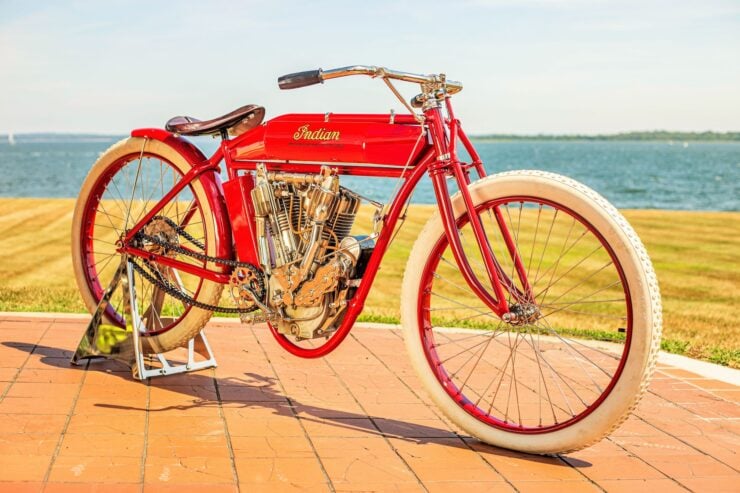
Above Image: Board track racing motorcycles are among the sleekest and most beautiful motorcycles ever made, and they were capable of speeds of over 100 mph.
Sales of this early “moto-cycle” took off after it was offered to the public for the first time in 1902. In 1903 chief engineer Oscar Hedstrom set the world motorcycle speed record of 56 mph, a speed thought impossible for the human body to withstand just a few short years earlier.
The first few years of the Hendee Manufacturing Company would be a whirlwind of activity and engineering advancements. In 1905 they build their first V-twin engined motorcycle, essentially just two single cylinder engines attached to a new common crankcase, and in 1907 they offered their first V-twin to the general public.
Although they didn’t know it at the time, it would be this V-twin engine architecture that would form the backbone of the company throughout the 20th century and well into the 21st century.
The use of a transversely mounted V-twin was chosen for purely practical reasons, these engines were the same width as their single cylinder counterparts so they fit neatly into the narrow motorcycle frames of the era, they also initially used many parts in common with the Indian singles, but they produced considerably more power.
https://youtu.be/YgsvhKkqFqY
Above Video: Footage of board track racing at Sheepshead Bay in 1919.
It would be in the fast-growing sport of board track racing that these early Indians would test their mettle against the likes of Harley-Davidson, Flying Merkel, Cyclone, and many other early luminaries.
The board tracks were made almost entirely from wooden planks shaped into giant banked oval circuits, some were a mile around, and they all feature fair ground-like experiences with food stalls, entertainment, and grandstand seating.
The thrills and spills of early board track racing brought millions of people out to see the spectacle, many would see vehicles crossing the 100 mph barrier in person for the first time, and all were captivated by the roar of the unmuffled racing engines, the clouds of smoke, and the smell of gasoline.
Despite their speed ability these early board track racers typically had no brakes at all and would instead rely on the riders rolling them to a standstill with some foot-dragging to help them come to a stop.
Accidents were sadly commonplace and many riders perished, safety was almost non-existent and helmets were typically just thin leather caps borrowed from the burgeoning world of flight.
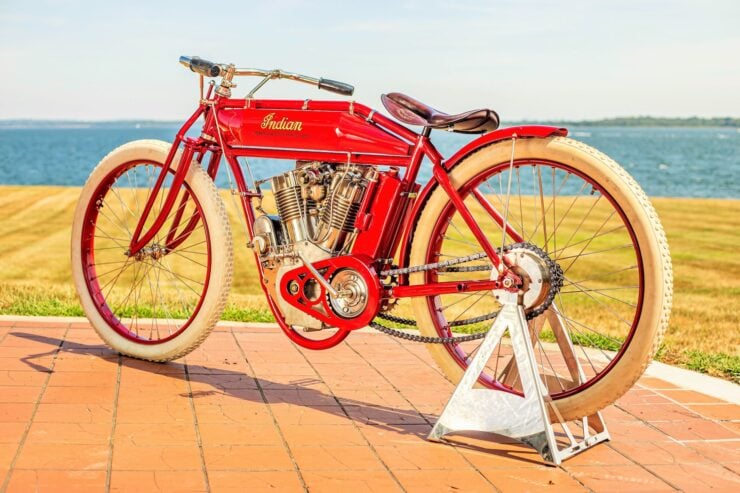
Above Image: Board trackers typically had no brakes and the riders would hunch down low behind the handlebars to minimize drag.
Indian’s early V-twins won a slew of races, it’s estimated that Jake DeRosier won 900+ races on dirt and board tracks, he also set a number of speed records both in America and at the Brooklands race track in England.
The 1913 Indian Board Track Racer Shown Here
The motorcycle you see here is a restored 1913 Indian Board Track Racer, it’s powered by the “Big Twin” 60 cu. in. (988cc) V-twin that featured an F-head design with the inlet over the exhaust.
This model uses the full loop frame that had been introduced by Indian in 1909, and it uses a two-speed all-chain drive – forgoing the belt final drives that were so common at the time.
These were motorcycles from the early years when motorcycles were little more than bicycles with an engine in the frame, and as such they had no suspension and a single down tube frame with the fuel tank mounted between the top two frame tubes.
Board track racing motorcycles had all the creature comforts of their road bike brethren removed, there were no lights, brakes, front fender, or wind protection. Riders had to duck down low, tuck their knees in and keep the throttle pinned open to have any hope of winning.
This motorcycle is due to cross the auction block with Mecum in late April at the Las Vegas Motorcycle Auction, if you’d like to read more about it or register to bid you can click here to visit the listing.
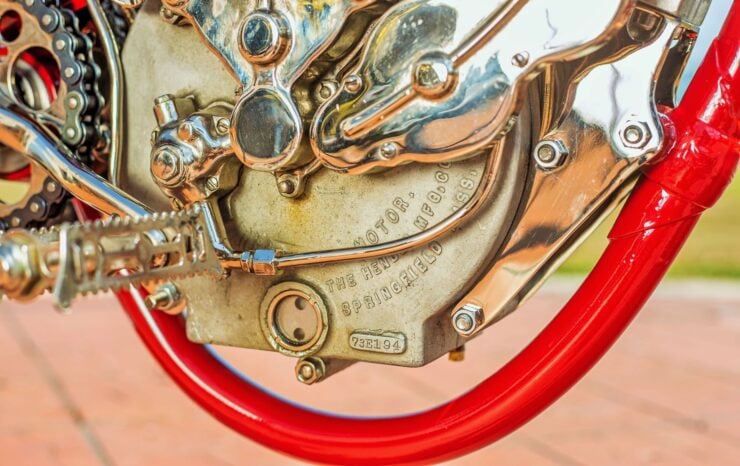
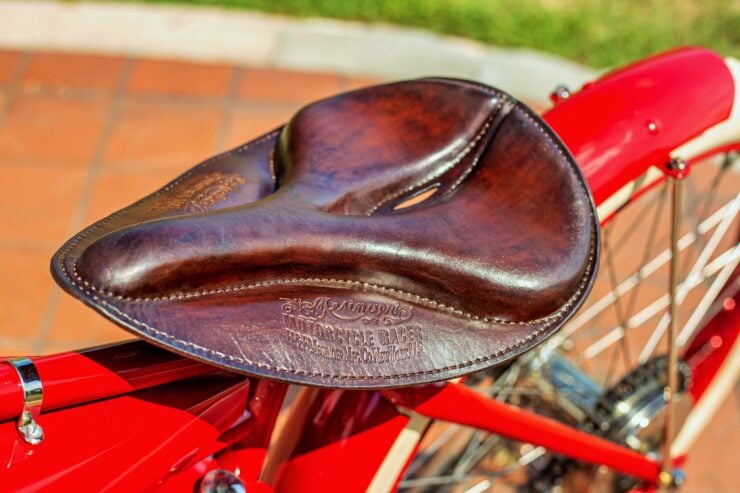
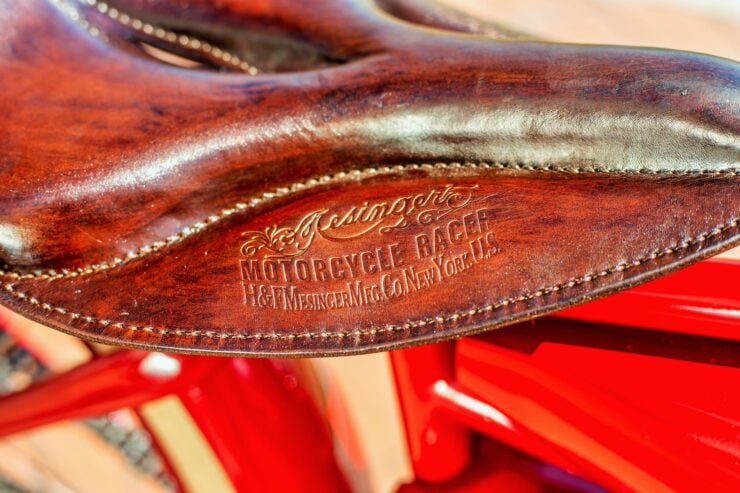
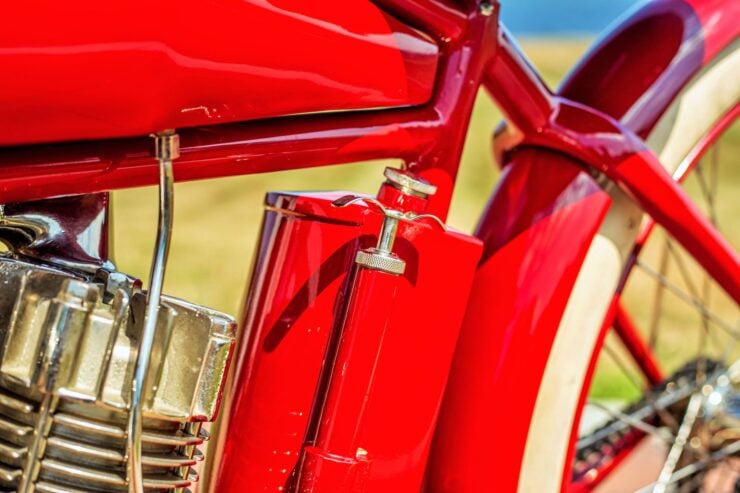
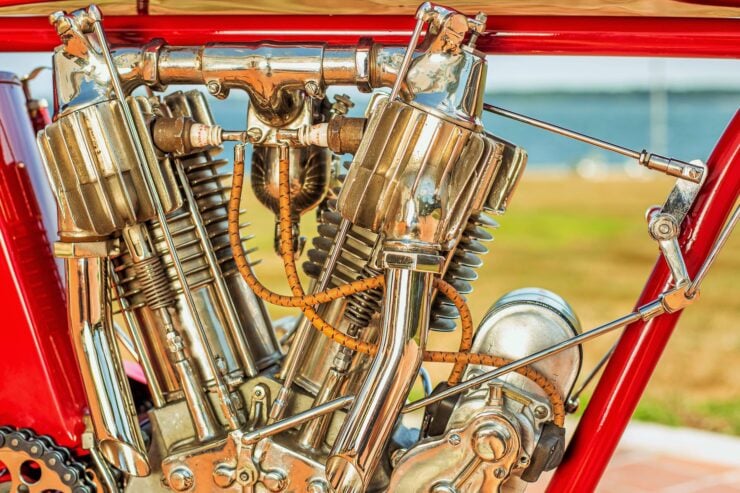
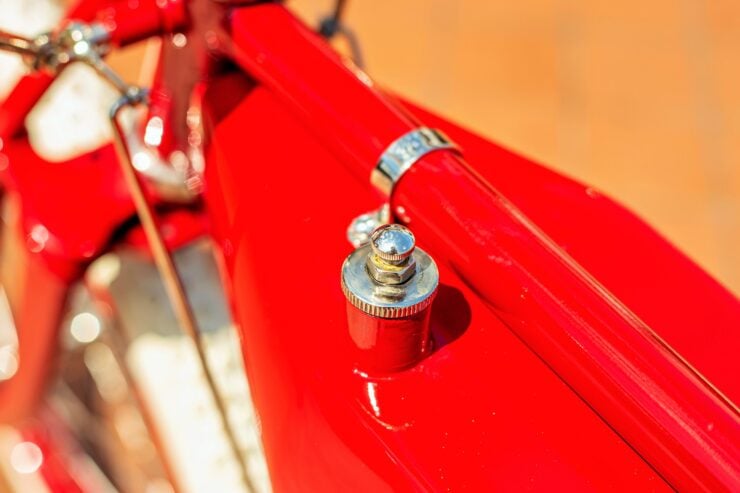
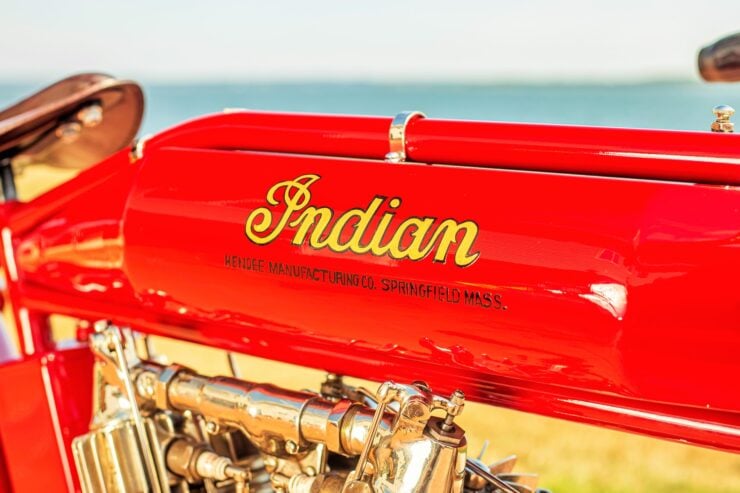
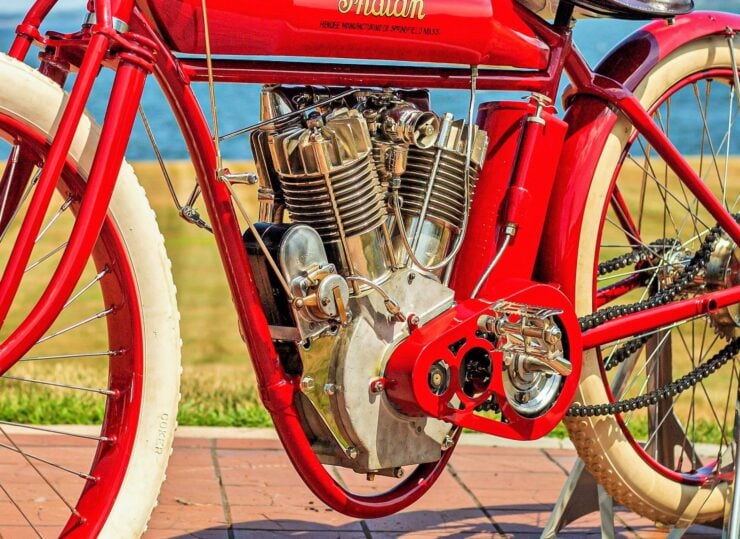
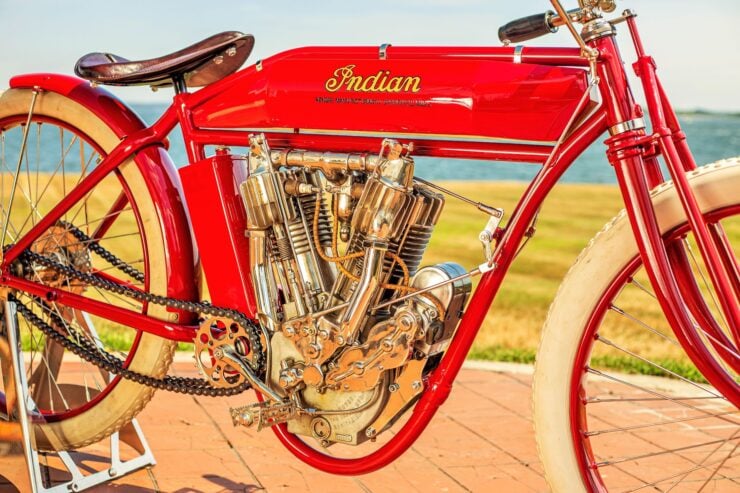
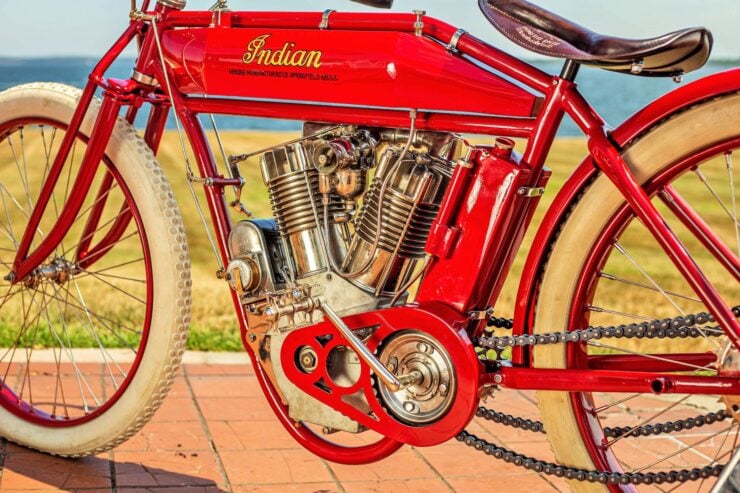
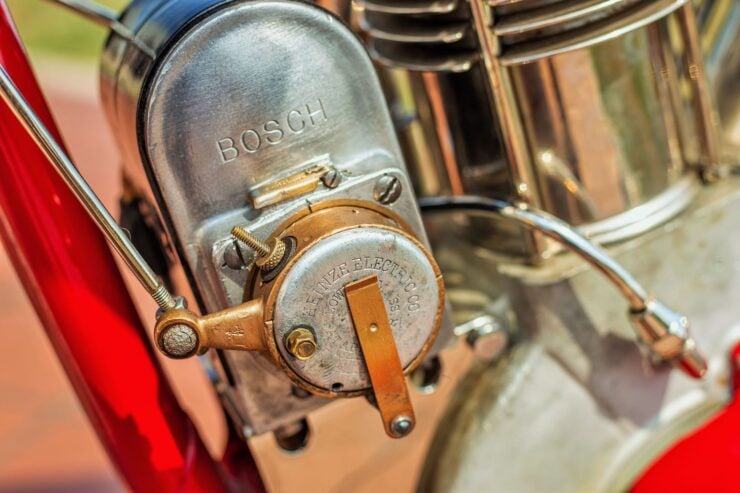
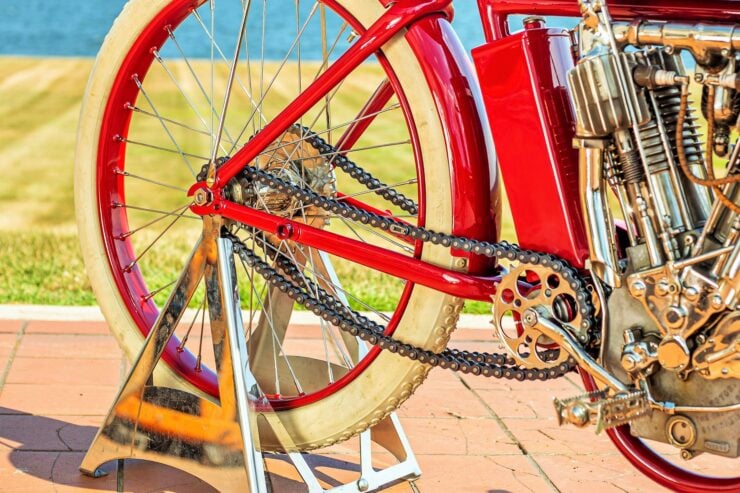
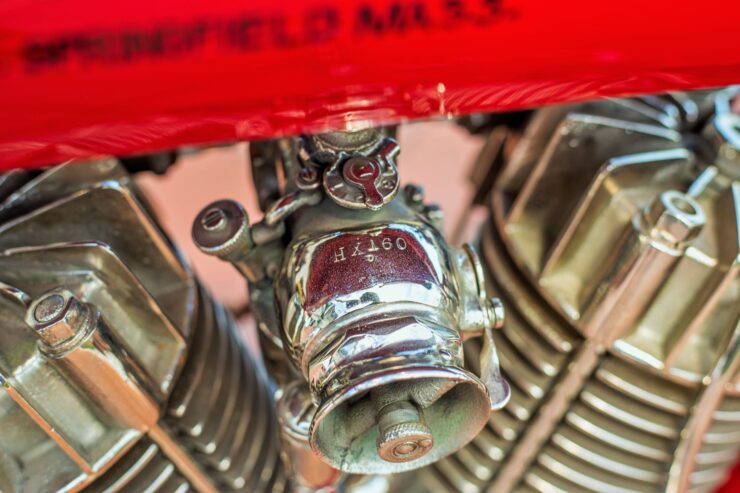
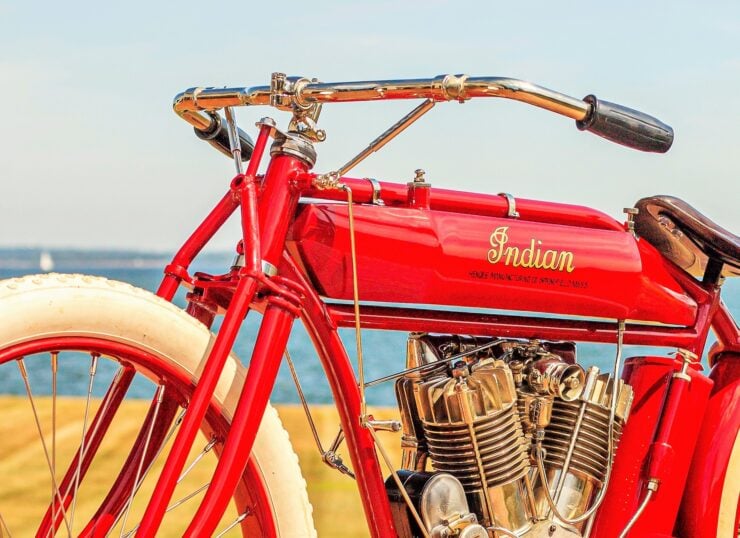
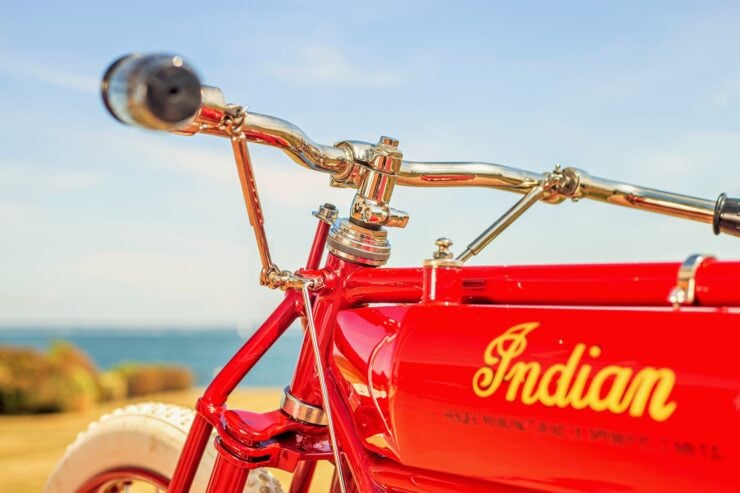
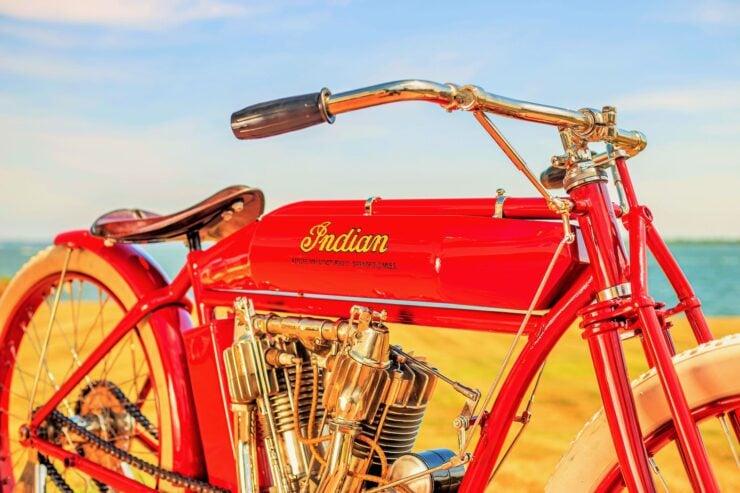
Images courtesy of Mecum

Articles that Ben has written have been covered on CNN, Popular Mechanics, Smithsonian Magazine, Road & Track Magazine, the official Pinterest blog, the official eBay Motors blog, BuzzFeed, Autoweek Magazine, Wired Magazine, Autoblog, Gear Patrol, Jalopnik, The Verge, and many more.
Silodrome was founded by Ben back in 2010, in the years since the site has grown to become a world leader in the alternative and vintage motoring sector, with well over a million monthly readers from around the world and many hundreds of thousands of followers on social media.

